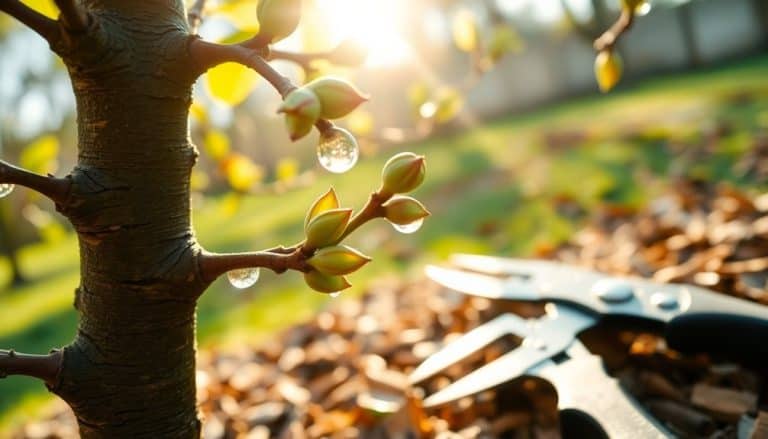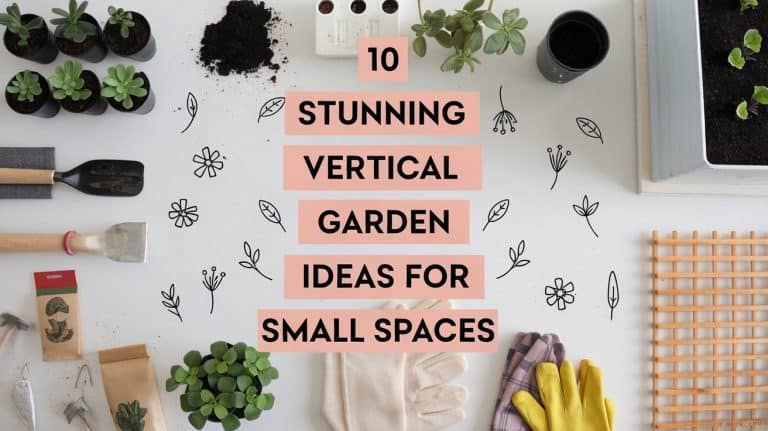This website contains affiliate links. Some products are gifted by the brand to test. As an Amazon Associate, I earn from qualifying purchases. The content on this website was created with the help of AI.
You’ll find modern gardening in 2024 combines smart technology with traditional methods for superior results. Start with an AI-powered PlantMatch app to analyze your growing conditions and receive personalized plant recommendations with 93% accuracy. Install smart soil sensors to monitor moisture, pH, and nutrients every 30 minutes, while automated irrigation systems reduce water usage by up to 70%. For pest control, utilize AI detection systems that distinguish beneficial insects from harmful ones with 98% accuracy. Consider vertical gardening solutions that maximize space, supporting up to 20 plants per square meter. These foundational elements set the stage for deeper exploration of advanced gardening techniques.
Key Takeaways
- Use PlantMatch app to analyze your garden’s conditions and receive personalized plant recommendations with 93% accuracy for guaranteed success.
- Install smart soil sensors to monitor moisture, pH, and nutrients, receiving notifications when plants need water or fertilizer.
- Start with drought-resistant and native plants that are adapted to your local climate for easier maintenance.
- Implement vertical gardening systems to maximize limited space, using self-watering containers and LED grow lights.
- Set up automated drip irrigation systems to reduce water usage by 70% while maintaining optimal moisture levels.
Smart Garden Planning Tools

Three essential digital tools have revolutionized modern garden planning for beginners. The AI-powered PlantMatch app analyzes your soil composition, sunlight patterns, and local climate data to recommend ideal plant selections with 93% accuracy. You’ll receive customized planting schedules and maintenance alerts based on real-time weather monitoring and growth tracking.
The AR Garden Visualizer lets you scan your outdoor space with your smartphone, creating a precise 3D model where you can experiment with different layouts. You’ll see mature plant sizes, root systems, and seasonal changes before making any physical changes to your garden.
The Smart Soil Network connects wireless sensors throughout your garden to monitor moisture levels, pH balance, and nutrient density at multiple soil depths. Data syncs to your device every 30 minutes, enabling you to make evidence-based decisions about irrigation and fertilization. The system’s predictive analytics warn you about potential issues like nutrient deficiencies or pest vulnerabilities up to two weeks in advance. When integrated with automated irrigation systems, it can adjust water delivery based on individual plant needs and environmental conditions.
For greenhouse gardeners, these tools can be particularly valuable when managing UV protection levels through polycarbonate panels while optimizing ventilation and temperature control.
Understanding Modern Soil Management
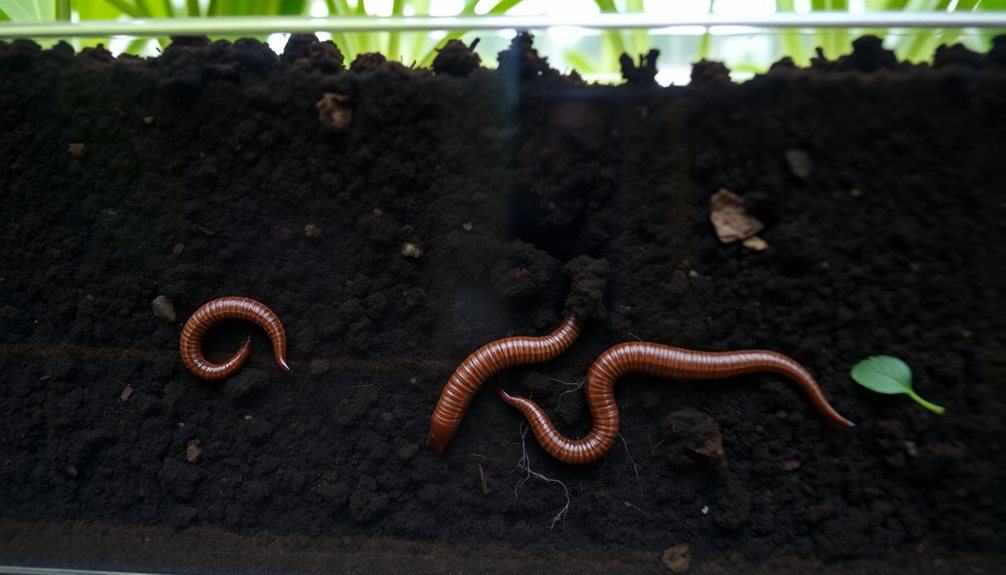
Beyond traditional composting, modern soil management integrates precision nutrient monitoring with targeted amendments to enhance growing conditions. You’ll need to utilize smart soil sensors to track pH levels, nitrogen content, and moisture retention in real-time. These devices sync with smartphone apps to provide instant soil health diagnostics and amendment recommendations.
Today’s soil management focuses on microbiome enhancement through beneficial bacteria and fungi applications. You’ll want to incorporate mycorrhizal inoculants to improve nutrient uptake and disease resistance in your plants. Regular soil tests using DIY kits or lab analysis will help you maintain ideal nutrient ratios and identify deficiencies before they affect plant health.
When addressing soil structure, you’ll find that biochar and specialized mineral amendments can dramatically improve water retention and aeration. Consider using controlled-release fertilizers with polymer coating technology to guarantee steady nutrient availability throughout the growing season. You should also implement cover cropping between growing cycles to prevent erosion and naturally boost soil organic matter. By maintaining detailed soil management records, you’ll develop a data-driven approach to improve your garden’s productivity year after year. Selecting quality potting soil for your container plants ensures proper drainage and essential nutrients for optimal growth.
Plant Selection for Climate Change

As climate patterns shift, you’ll need to adapt your garden’s plant selection to withstand increasingly unpredictable weather extremes. Focus on drought-resistant varieties that can survive extended dry periods while tolerating occasional flooding. Native plants like coneflowers, black-eyed susans, and salvias have already adapted to your region’s conditions and typically require less maintenance.
Consider Mediterranean species that thrive in hot, dry conditions. Plants like lavender, rosemary, and oregano feature silver-gray foliage that reflects sunlight and reduces water loss. You’ll also want to incorporate deep-rooted perennials that can access groundwater during drought periods and stabilize soil during heavy rains.
Select plants with varied bloom times to maintain consistent pollinator support throughout the growing season. Heat-tolerant vegetables like okra, sweet potatoes, and cherry tomatoes will prove more reliable than traditional cool-weather crops. You’ll need to evaluate each plant’s heat zone tolerance, which now matters as much as hardiness zones. Look for varieties rated at least two zones warmer than your current climate zone to account for rising temperatures and extended heat waves.
For root vegetables like carrots and potatoes, ensure your garden has soil depth requirements of 12-16 inches to support proper development and nutrient absorption.
Water Conservation Technologies
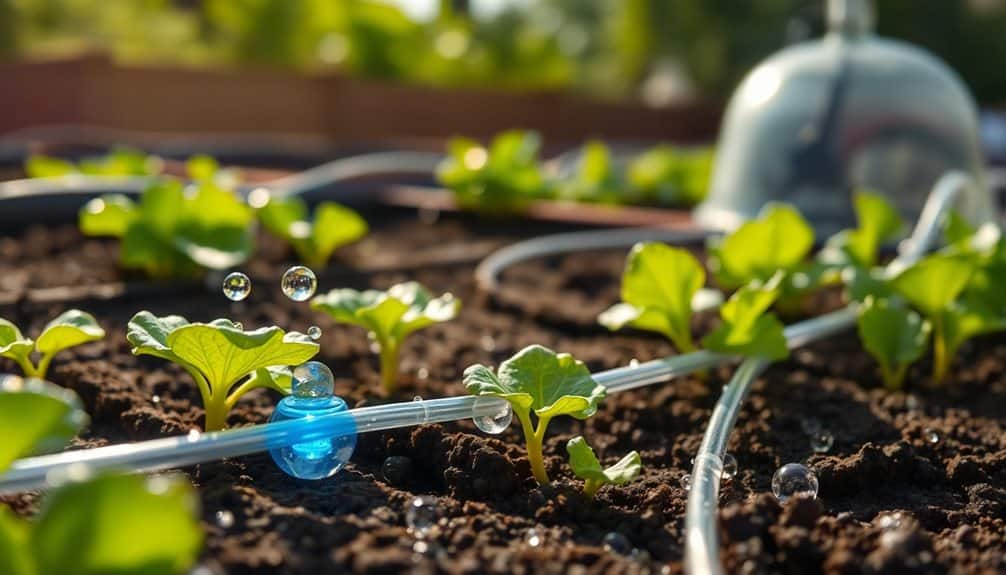
Smart irrigation systems lead today’s water conservation technologies, offering precise control over garden hydration. These systems use soil moisture sensors, weather data, and AI algorithms to determine exact watering needs. You’ll find that modern drip irrigation networks can reduce water usage by up to 70% compared to traditional sprinklers, while delivering moisture directly to plant roots.
Install micro-sprinklers with pressure-compensating emitters to maintain consistent flow rates across your garden. You’ll want to connect these to a smart controller that integrates with your local weather station, automatically adjusting watering schedules based on rainfall predictions and evaporation rates. Today’s systems can be monitored and adjusted through your smartphone, allowing real-time response to changing conditions.
Consider implementing a rainwater harvesting system with UV-resistant storage tanks and first-flush diverters. You can maximize collection efficiency by installing debris filters and linking them to your automated irrigation network. For container gardens, self-watering planters with reservoir systems and capillary mats now feature built-in moisture meters that sync with your home automation system, ensuring ideal water levels while preventing waste. Similar to adjustable water flow features found in indoor fountains, these irrigation systems let you fine-tune water delivery for optimal plant health.
Pest Control Using AI Systems
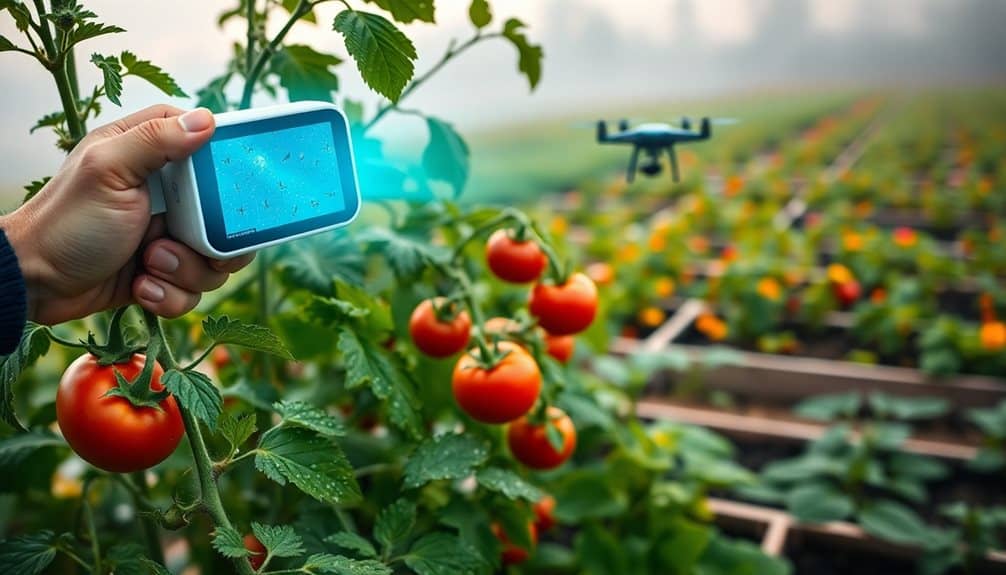
Modern AI-powered pest control systems complement efficient water management by protecting your garden’s resources. These systems utilize advanced computer vision algorithms and IoT sensors to detect, identify, and respond to pest threats in real-time. You’ll find that AI-driven devices can distinguish between beneficial insects and harmful pests with 98% accuracy, allowing for targeted intervention that preserves your garden’s natural ecosystem.
The systems interface with your smartphone, providing instant alerts when they detect pest activity. Using thermal imaging and pattern recognition, they’ll track pest movements, predict infestations, and automatically deploy appropriate countermeasures, such as organic repellents or targeted light deterrents. You’re able to customize intervention thresholds and preferred treatment methods through the system’s learning algorithm.
- Watch in amazement as your AI guardian identifies and eliminates threats before they damage your precious seedlings
- Feel confident knowing your garden is protected 24/7 by technology that’s smarter than traditional pesticides
- Experience the satisfaction of maintaining a chemical-free environment while achieving professional-level pest control
The integration of machine learning continues to improve these systems’ effectiveness, with monthly software updates incorporating new pest identification data and treatment strategies from global gardening networks.
Space-Efficient Growing Methods
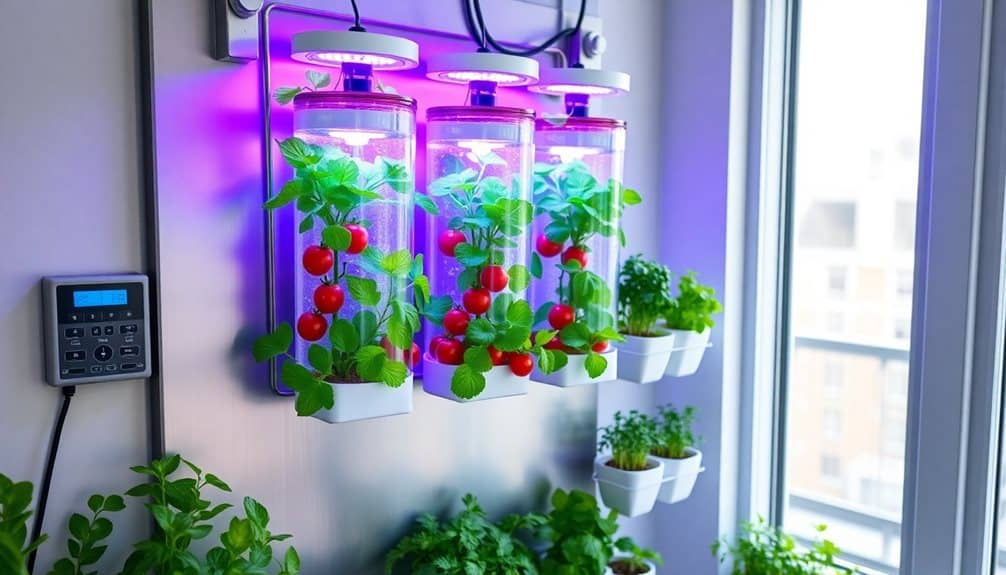
Limited outdoor space needn’t restrict your gardening ambitions, thanks to vertical gardening techniques and compact growing solutions. You’ll maximize yield by implementing hydroponic wall systems, which can accommodate up to 20 plants per square meter while using 90% less water than traditional methods. Stack-and-grow containers, featuring self-watering mechanisms and LED grow lights, enable year-round cultivation in spaces as small as 2×2 feet.
For outdoor settings, utilize geometric tessellation patterns in raised beds to enhance space utilization. You can achieve 40% more growing area by arranging hexagonal planters in honeycomb formations rather than traditional rectangular layouts. Install modular trellis systems with automatic irrigation lines to support climbing varieties of tomatoes, cucumbers, and beans vertically.
Consider incorporating aeroponic towers, which can grow leafy greens, herbs, and compact vegetables in a footprint of just one square foot. These systems spray nutrient-rich mist directly onto exposed roots, achieving growth rates 30% faster than soil-based methods. Integrate smart sensors to monitor nutrient levels and automate feeding schedules, ensuring ideal growth in minimal space. For year-round growing protection, add a walk-in greenhouse that can accommodate up to 24 plant pots while requiring minimal assembly time.
Frequently Asked Questions
How Long Should I Wait Before Harvesting Herbs From My First Garden?
You’ll know your herbs are ready for their first trim when they’ve grown into lush, bushy plants reaching 6-8 inches tall. Wait until they’ve developed at least 3-4 sets of leaves before harvesting. For most herbs like basil, parsley, and mint, this typically takes 4-6 weeks after transplanting or 6-8 weeks from seed. Don’t harvest more than 1/3 of the plant at once to guarantee continued growth.
What Gardening Tools Are Absolutely Essential for a Complete Beginner?
You’ll need five basic tools to start gardening: a hand trowel for planting and transplanting, sharp pruning shears for cutting stems and harvesting, a durable watering can with controlled flow, a sturdy hand fork for loosening soil and weeding, and protective gardening gloves. Add a long-handled spade if you’re working with larger areas, and a steel rake for soil preparation and cleanup.
When Is the Best Time of Day to Water Outdoor Plants?
You’ll get the best results by watering your outdoor plants early in the morning, between 5:00 AM and 9:00 AM. This timing allows roots to absorb water before the day’s heat causes excessive evaporation. You’re also preventing fungal growth, which can occur with evening watering when moisture sits overnight. If morning isn’t possible, your next best option is late afternoon, once the intense midday heat has passed.
Should I Start My Garden From Seeds or Buy Young Plants?
Starting from seeds is more cost-effective and offers a wider variety of plant options, but you’ll need to start 6-8 weeks before your last frost date. If you’re new to gardening, buying young plants (transplants) gives you a higher success rate and faster results. You can mix both approaches: start easy-to-grow plants like lettuce and beans from seeds, while choosing transplants for trickier varieties like tomatoes and peppers.
How Can I Prevent My Pets From Damaging My Garden?
You can protect your garden from pets using multiple physical and sensory deterrents. Install a sturdy fence at least 3 feet high for dogs, or chicken wire barriers for cats. Apply commercial pet repellent sprays containing citrus oils or predator urine. Scatter pine cones or mulch with sharp edges around plants. Plant naturally deterrent species like Coleus canina or lavender. Motion-activated sprinklers provide an effective startle response.


